The asteroid hit the earth and wiped out the dinosaurs and destroyed most species on the earth, but mammals survived this catastrophe. So how did these small and fragile creatures, including our mammalian ancestors, survive this apocalypse?
This is the most tragic day in the history of the earth. A small furry animal ran in terror in a hellish world shrouded in darkness, volcanic ash and deadly heat. It searched for life-sustaining food on the scorched earth and caught one. After catching the insect, it immediately fled in panic back to its underground shelter. Surrounding the small animals are the huge bodies of dead or dying dinosaurs, the behemoths that have threatened the survival of the poor mammals for generations.
This was a hellish scene in the first few weeks or months after an asteroid with a diameter of 10 kilometers and a power equivalent to more than 1 billion nuclear bombs hit the coast of Mexico today. This violent impact of landslides and ground cracks ended the Earth's Cretaceous era (Cretaceous) and announced the beginning of the Paleocene era (Paleocene). At this moment, the world's forests were a sea of fire, huge tsunamis hit the coast, and high-temperature vaporized rocks and volcanic ash and dust blasting miles high into the atmosphere.
But there is still life surviving in this destroyed world. Among the survivors was the earliest known primate, Purgatorius, a mammal that looked like a cross between a shrew and a small squirrel. After experiencing this global mass extinction disaster, the number of Purgatori monkeys will definitely decrease, but fortunately the species has been preserved and can continue the family lineage.
This is what life was like for early mammals after an asteroid hit the Earth and wiped out three-quarters of all species on Earth at the time. In terms of the severity of life extinction, in the entire history of the earth, only the Permian-Triassic extinction event 252 million years ago, known as the Great Dying, has surpassed this asteroid impact. Earth. The mass extinction event caused the death of 95% of marine life and 70% of terrestrial life. However, the extinction process was extremely slow, lasting up to 60,000 years. Unlike the asteroid hitting the earth, the disaster occurred suddenly from the sky.
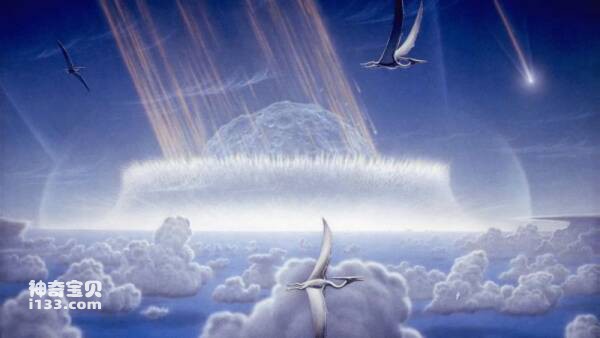
Asteroid hits Earth and kills dinosaurs
The asteroid that hit Earth and ended the Cretaceous Period also ended famous dinosaurs like Tyrannosaurus and Triceratops, as well as the lesser-known but rather bizarre Anzu, known as the "chicken from hell." Also extinct were the duck-billed dinosaurs, long-necked dinosaurs, and dinosaurs covered in armor. All the above dinosaurs are extinct.
In the geological era of the Late Cretaceous, in the shadow of these giants that looked down on the earth, many small mammals such as Purgatori monkeys lived as humble and humble lives as today's mice and other rodents in terms of ecological ranking. low. But these seemingly fragile creatures, including our human ancestors, miraculously survived the end of the world. How did they do this?
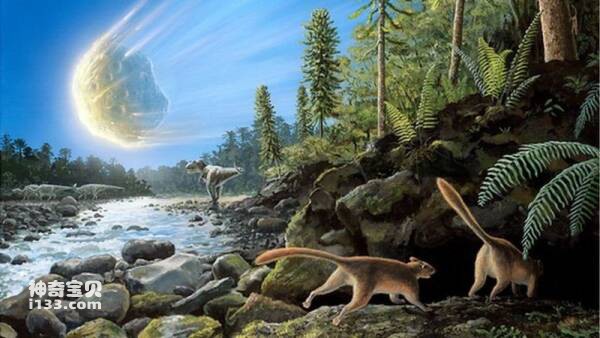
The Purgatory monkey, the earliest known primate to humans, is one of the survivors of the mass extinction caused by an asteroid impact on the Earth (Credit: Science Photo Library)
That question posed Steve Brusatte, author of The Rise and Reign of the Mammals, and his colleagues at the University of Edinburgh The topic we have been studying.
Brusatte emphasized that the day the asteroid hits the earth will be a life-or-death disaster for any life on earth, including mammals, birds (that is, bird dinosaurs) and reptiles. "This is not an ordinary asteroid," Brusatte said. "This is the largest asteroid to hit the Earth in at least the past 500 million years. Mammals were very close to being wiped out like the dinosaurs."
However, it is true that many species of mammals disappeared in this unprecedented natural disaster. Sarah Shelley, a postdoctoral fellow in mammalian paleontology in Edinburgh, said that in the late Cretaceous, the diversity of mammals was already amazingly rich. "Many mammals are small animals that live in trees or in caves and eat insects," she said.
However, not all mammals are insectivores. At that time, there was also a mysterious polydont, named after the special tumor-like nodules on its teeth. "The mammal's teeth were lumpy, with little bumps on them, and they had blade-like teeth on the front that looked like a saw," Shelley said. "They ate fruits, nuts and seeds."
There were also carnivorous mammals at that time, and one of the largest, Didelphodon, was a marsupial that weighed about 5 kilograms, about the same size as today's domestic cats. Shelley said, "Judging from the anatomy of the skull and teeth, the bite force of Rattodon was very strong and could crush bones, so it must be a carnivore."
Brusatte said that after the asteroid hit the earth, most of the mammal species in the late Cretaceous period disappeared, and about 90% of the mammals were extinct. However, this brought unprecedented consequences to the surviving animals that escaped the disaster. Chance.
"You can imagine one of these tiny ancestors of our species, the size of a mouse, a timid little thing hiding in the shadows, and you made it through this moment in Earth's history," Brusatte said. "When disaster strikes In the past, you pop up and all of a sudden those big scary things like T. rex and long-necked dinosaurs are gone and the whole world opens up to you.”
This mass extinction created the conditions for a vast and diverse array of new species, eventually giving rise to blue whales, cheetahs, dormice, platypuses and, of course, us humans.
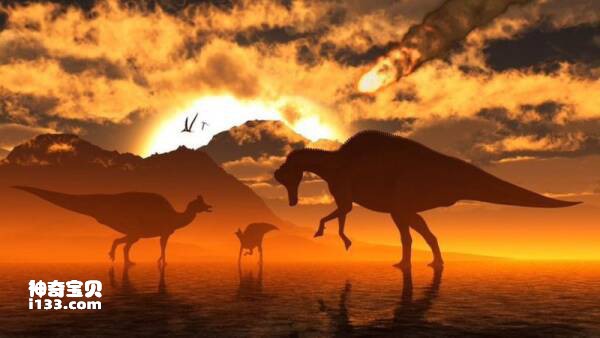
Dinosaurs became extinct after an asteroid hit Earth (Credit: Getty Images)
First of all, here is a reminder: After the impact, the world's forests were devoured by wildfires, the sky was filled with smoke and dust, blocking the sky and blocking the sunlight, and plants were unable to perform photosynthesis. As Brusatte puts it, Earth's ecosystems are collapsing "like a house of cards." The earth's surface temperature became hotter than an oven due to a vicious roller coaster-like heat pulse, but then the earth entered a cold nuclear winter, with the temperature dropping by an average of 20 degrees Celsius, which lasted for more than 30 years. While many of mammals' most dangerous predators have disappeared, Earth's environment has become unimaginably harsh for life.
How can mammals adapt to such a harsh environment and continue their species?
Keep being an animal
Before the asteroid extinction disaster, mammals had always been small in size due to strong competition and predation from dinosaurs. However, after the disaster, this size has become a favorable asset for "post-disaster animal refugees".
Brusatte said, "These mammals look and behave like rats of all sizes. They usually live quietly in dark corners, but after the disaster, in this new world, mammals multiply rapidly because Its size is ideally suited to the horrific conditions that would be encountered after an asteroid hits Earth."
Small size may help animals reproduce more quickly and increase their numbers. Ornella Bertrand, a postdoctoral fellow in mammalian palaeontology at the University of Edinburgh, said that in the modern animal world, "the bigger you get, the longer it takes to get pregnant." For example, the gestation period of African Elephants-Are-Endangered.html">elephants is 22 months, while the gestation period of mice is only about 20 days. Therefore, in the face of a doomsday disaster, smaller rats have a greater chance of maintaining population growth.
In addition to the long gestation period, larger animals also take much longer to reach sexual maturity, especially the giant dinosaurs. This is another reason why dinosaurs wouldn't survive the apocalypse. "It took dinosaurs a long time to reach maturity," Brusatte said. "Animals like Tyrannosaurus rex probably took 20 years. It's not that dinosaurs didn't grow fast, it's just that many species were really big." It's so huge that it takes a long time to grow from a tiny cub to an adult behemoth."
Escaped by hiding underground
Another clue to the mystery of how mammals could survive an asteroid impact is that mammal fossils found in strata from the Paleocene and earlier ages have "very strange" body shapes. The mammalian ankle bones found in the early Paleocene strata are small, tough, high-density, and well-preserved. Shelley analyzed the ankle bones to see how similar these mammals were to mammals living on Earth today.
"We found that the Paleocene mammals were strange and different from modern mammals. What they had in common was that they were small but very strong," she said.
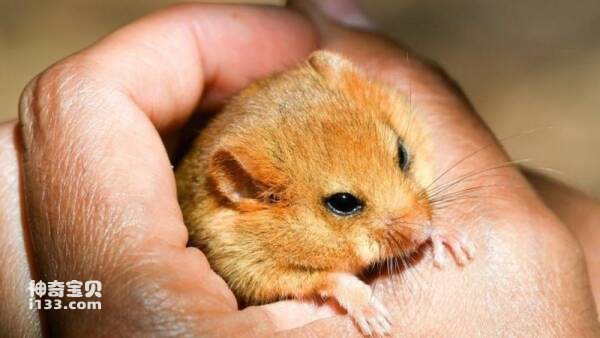
Small body size may help animals reproduce faster and increase their numbers
Shelley said these mammals had strong muscles and large bones and were most similar to those of today's animals that dig burrows in the ground. "The resulting hypothesis is that animals that survived mass extinctions had a survival advantage in that they burrowed into the ground to roost, and were therefore able to escape the first wave of disaster after a direct impact, as well as subsequent ground fires and In a nuclear winter, they just have to lurk underground for a while and wait for the disaster to pass.”
Let's put it this way, because these survivors of the extinction disaster survived, their descendants also inherited this strong body shape. "You could see this mammal 10 million years into the Paleocene Epoch, still very bulky even though it was living in trees," Shelley said.
If the surviving mammals really lived underground, whether digging their own burrows to live in or living in the underground burrows of other animals, Bertrand speculated that this might also be reflected in the agility of these mammals, or in other words Lack of agility. "We know that forests were destroyed, so all the tree-dwelling animals lost their habitat," she said. "So one hypothesis is that few of the surviving animals were as nimble and agile as arboreal animals."
Bertrand plans to study the inner ear bones of mammals from this era to determine whether his findings support the hypothesis that the mammals survived by sheltering underground after an asteroid impact. The inner ear plays a large role in the balance of the animal's limbs. If the animal needs to have dexterous and agile movements, their bones will have corresponding fine structures. But if animals only need to be physically strong to dig holes, then agility is superfluous. "It can give us more clues," she said. That said, Bertrand also pointed out that over-reliance on bones to infer an animal's locomotor behavior is also flawed, which she observed when watching the recent Commonwealth Games. A deep impression.
Bertrand said with a laugh, "I see gymnasts doing some crazy things and I think, that's funny, we have the same bone structure and I can't do it. I think, that's really funny because maybe having This ability can help you survive, but you wouldn't know from your bones whether you have it or not."
Omnivory brings survival advantage
Asteroids destroyed most living plants on Earth, which are the lowest link in many food chains on Earth's land. Omnivorous mammals can eat any food and are better able to adapt to the environment than animals that only eat certain special foods, so they have a greater chance of survival.
"The animals that survived the mass extinction basically had very unspecialized diets," Shelley said. For example, Didelphodon, a cat-sized relative of carnivorous marsupials, hunted only food. An animal of some kind, but the animals it preyed on became very rare after the mass extinction. Shelley said, "The food of Rattoothosaurus was too single, so it lost its way of survival. However, if it was a small animal, it could change its diet and lifestyle more quickly to adapt to the environment. This is how it survived a mass extinction. A good way.”
Brusatte said that in addition to those animals that can eat anything and survive, there are also a few animals with special feeding habits that will also have an advantage, especially those that eat plant seeds. He said, "Seeds are a food bank that will not be depleted. Any animal that already feeds on seeds will also be able to obtain seeds during the mass extinction. So if an animal like Tyrannosaurus rex is not so lucky, evolution has not given These animals have the ability to digest seeds. But for birds with beaks and some mammals that are specialized in eating plant seeds, wow, could this be a time of opportunity?"
In addition to sustaining disaster-stricken animals, plant seeds also help rebuild forests and vegetation after nuclear winter disappears. "Seeds were able to survive in the soil during the mass extinction, and when sunlight returned, those seeds began to germinate and grow," Brusatte said.
A longer body but not a brain
As the Paleocene epoch passed, the ecosystem recovered and the earth became vibrant again. At this time, mammals began to fill the gaps left by non-avian dinosaurs and became the strongest life species on the earth. "Immediately after the extinction of the dinosaurs, mammals began to diversify and diversify in every aspect," Bertrand said.
First, mammal bodies grew rapidly. But the Edinburgh team found that changes in mammal brain size have not kept pace with body size.
Bertrand said, "I think this is very important, because we originally thought that it may be the development of intelligence that allows mammals to survive and eventually dominate the earth. But, from the data, it is not the growth of the brain that allows animals to survive at a young age. Surviving an asteroid impact.”
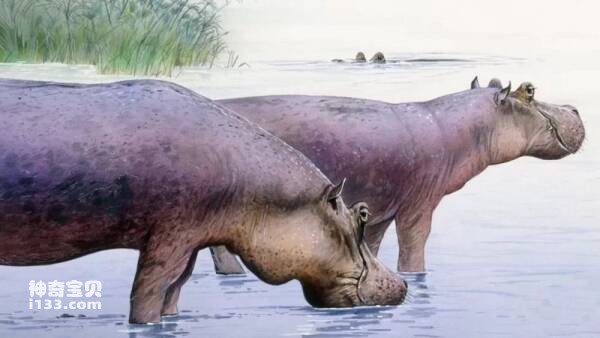
Mammals need their entire body to become larger and stronger to adapt to the environment
In fact, in the early Paleocene, mammalian brains may have been detrimental to survival if they were too large relative to their bodies. Bertrand asked, "The question is why do you need a big brain? In fact, having a big brain is quite expensive. If you have a big brain, you need to eat a lot to maintain it. If you don't have enough, If we can’t provide enough food, we will become extinct.”
In contrast, mammals need their entire bodies to become larger and stronger to adapt to their environment. In the hundreds of thousands of years after its extinction, the herbivore Ectoconus reached a weight of about 100 kilograms. Ectotherium belongs to the family Periptychidae, which may be related to living hoofed mammals. Hundreds of thousands of years are just a blink of an eye in the geological timeline. Shelley said, "It's amazing that Ectoconidae grew so big so quickly and developed herbivorous habits so quickly. You see, once there are large herbivores, there will also be large carnivores, mammals Animals began to develop and evolve rapidly."
Many other mysterious mammals also expanded rapidly. Shelley said, "Animals like the toothed beast grow very quickly and grow very large." The complete skeleton of the toothed beast has not yet been found, but skull fossils have been found, and its skull is about an hour old. The size of a butternut squash, the odontids appear to be one of the species that only became stronger after the mass extinction to adapt to burrowing. Shelley said, "The eye position is very small, the eyes are very small, but they have huge teeth in the front, which is a bit like a rodent, but that's it. It's a very mysterious animal."
These mammalian species, which evolved rapidly from post-disaster fauna, had long been ignored by science, Shelley said. She said that the scientific community once "thought that they were ancient, primitive, and ordinary, but they were not. They really had their own characteristics. Their ancestors survived the second mass extinction in the history of life on earth, and they were by no means slow. Ordinary stupid animals that eat their way through life. They survive and reproduce spectacularly.”
In many ways, these mammals filled the ecological space left behind after the dinosaurs were wiped out. The living habits are highly individualized. The giant dinosaurs were very adapted to the ecological environment of the late Cretaceous period, but they lacked the ability to survive in the catastrophic world after an asteroid impact.
Brusatte said, "The most shocking thing is that there were animals like dinosaurs on our earth. They lived for tens of millions of years and created such a great and glorious history, such as evolving themselves into airplane-sized animals. Behemoths, as well as carnivores as big as buses, etc., but when the earth suddenly suffered huge changes, these behemoths were completely extinct in an instant. Dinosaurs could not cope with the new world and could not adapt to survive."

The asteroid that wiped out the dinosaurs blasted through the atmosphere and hit the Earth faster than a bullet (Credit: Nasa/JPL-Caltech)
The occurrence of asteroid impacts on the Earth is highly random, which seems to have particularly impressed a team of researchers at the University of Edinburgh who are studying how mammals seek refuge and survive after mass extinctions.
Bertrand said, "We humans are able to come to this world today mainly by luck. The asteroid that hit the Earth may pass by the Earth, or it may fall into the ocean in another area of the Earth, no matter where it is. All possibilities will lead to different results in the selection and evolution of life species in the future. Whenever I think about the chance of this whole thing, I find it incredible."
Brusatte feels the same way. He said, "The asteroid may just roar past the earth, it may only stir up the upper atmosphere, or it may have disintegrated when it approached the earth. This asteroid had various possibilities, but it was really bad luck. , it is heading straight towards the Earth.”
But for the mammals living on earth today, this disaster may be a God-given opportunity.
animal tags:
We created this article in conjunction with AI technology, then made sure it was fact-checked and edited by a Animals Top editor.